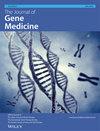Gliomas currently have a poor prognosis and limited therapy options. Betulinic acid (BA) has demonstrated antitumor activity in various cancers. This study is aimed at clarifying the underlying mechanisms by which BA inhibits gliomas.
We assessed how BA affected the migration, apoptosis, invasion, proliferation, and viability of U251 glioma cells. The genes that were differentially expressed after BA treatment were identified via RNA sequencing. Utilizing Gene Ontology and the Kyoto Encyclopedia of Genes and Genomes, research was done to determine the affected pathways. Molecular docking was applied to explore the interaction of BA with key pathway molecules. Experimental assays were conducted to confirm the impact of BA on these pathways and targets.
In U251 cells, BA reduced viability; inhibited colony formation, migration, and invasion; and triggered apoptosis. Through RNA sequencing, 923 up- and 1469 downregulated genes were found, with notable enrichment in the TNF, PI3K-Akt, and ferroptosis pathways. BA can stably bind to TNF and PI3K-Akt pathway molecules, especially AKT1 (binding energy = −10.2 kcal/mol). BA administration decreased the levels of phosphorylated PI3K and AKT. Moreover, BA-induced ferroptosis and HO-1 and NRF2 levels were increased. Ferrostatin-1 and zinc protoporphyrin pretreatment decreased intracellular iron and lipid peroxidation and decreased the decrease in cell viability caused by BA.
BA controls the PI3K/Akt and NRF2/HO-1 pathways, which results in glioma ferroptosis. Understanding BA's multipathway mechanism may inform its therapeutic potential in glioma treatment.



